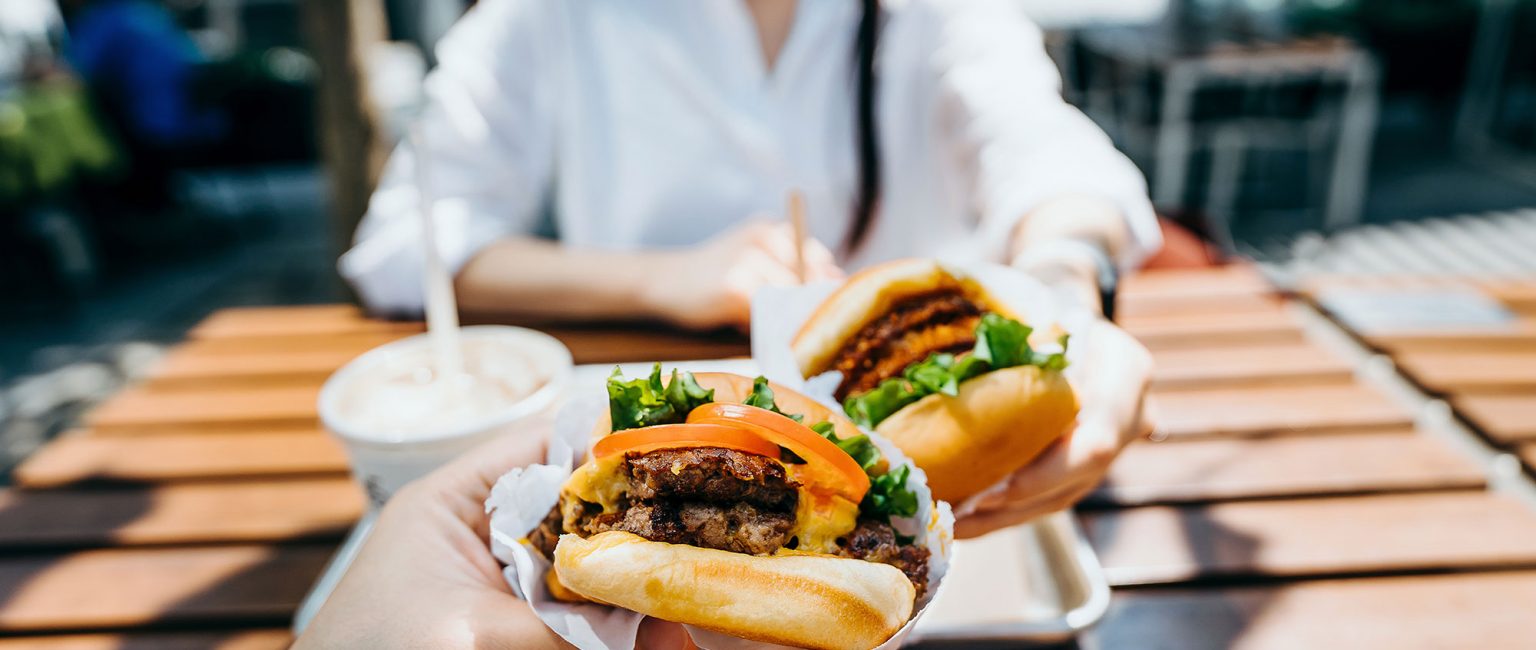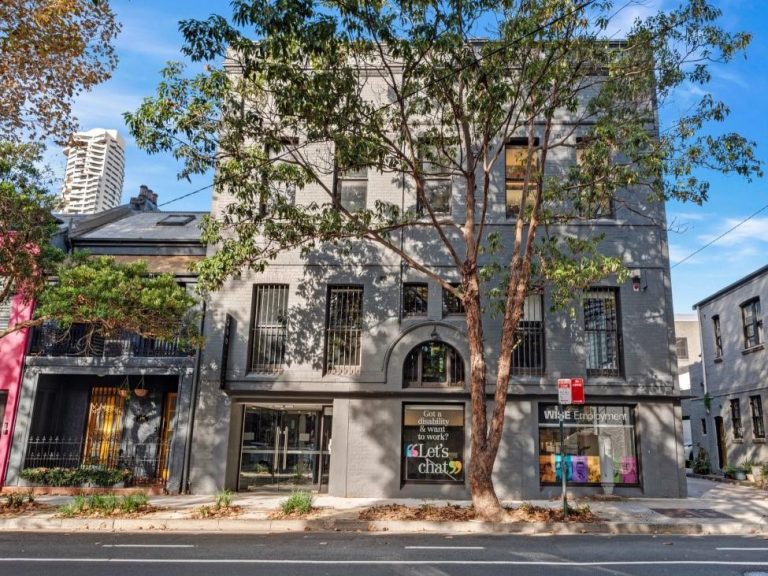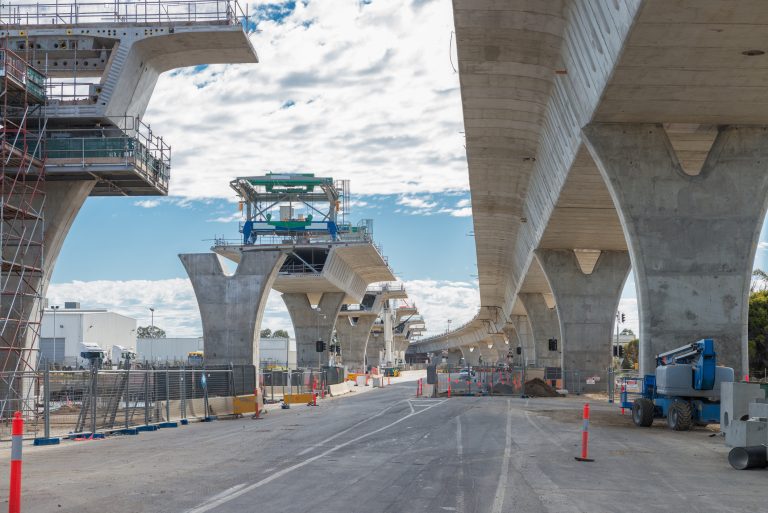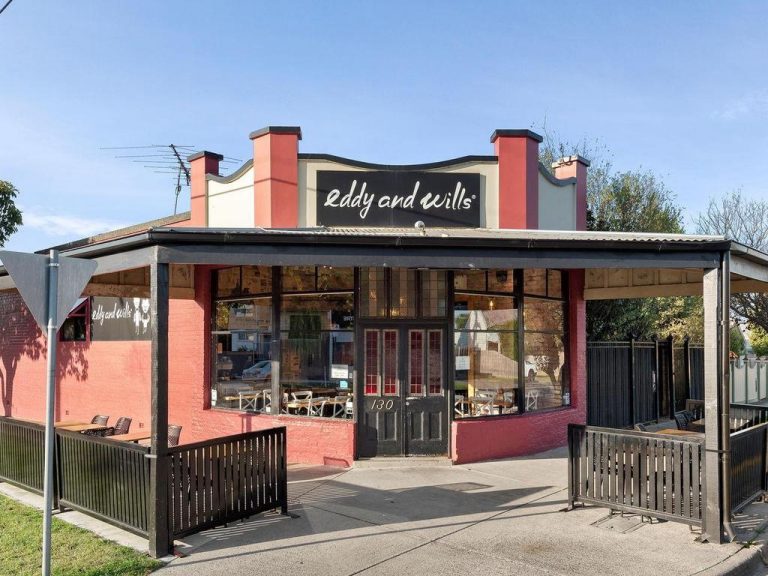Investment with the lot: fast food brands that drive a thriving real estate sector

Australians have had a taste for American-style fast food since GIs hit our shores during World War II – and the delivery methods have evolved remarkably.
Author and food historian Jan O’Connell, whose Australian Food Timeline blog traces our changing menu, said early attempts to replicate the tastes we acquired from GIs faltered.

KFC was the first of the big US fast food restaurant chains to open in Australia. Picture: Getty
“One of the earliest was in 1960. Lee Gordon, the entrepreneur who brought out lots of acts including Frank Sinatra, started a small chain of drive-in restaurants in Sydney. They didn’t last long.” she said. An Adelaide businessman established Burger King (unaffiliated with the US giant) in 1962, which grew to 17 outlets before it disappeared.
But the scene changed forever in 1968.
The big five
Kentucky Fried Chicken beat McDonald’s to Australia by four years. Canadian Bob Lapointe opened Australia’s first KFC in Sydney’s Guildford on April 27, 1968. KFC led the market through the ’70s and now has 680 Australian stores.

An early Kentucky Fried Chicken opens in Preston in Melbourne’s north circa 1968. It was an event, with radio station 3DB putting on a concert to celebrate. Picture: KFC Australia
The first Australian Pizza Hut, in Sydney’s Belfield, opened in 1970. Its family-friendly all-you-can-eat restaurants have given way to a take-away/delivery model. Only nine out of 248 Pizza Hut stores are dine-in.
McDonald’s first opened at Sydney’s Yagoona on December 30, 1971. A year later, KFC had 116 outlets in most states and McDonald’s remained Sydney-only, but it marketed aggressively and bought smaller competitors to gain market share, stepping outside NSW for the first time in Melbourne’s Glen Waverley in October 1973. Macca’s now has 970 stores.

This clipping from the Waverley Gazette advertises the official opening of Victoria’s first McDonald’s at the corner of Springvale Rd and High Street Rd in Glen Waverley with details of the event and a complete menu. Picture: Waverley Gazette/Monash Libraries
Hungry Jack’s, the Australian arm of Burger King, first opened in Perth’s Innaloo in June 1971. Canadian-born Jack Cowin purchased Burger King’s system but with Adelaide’s Burger King already operating, he named his venture Hungry Jack’s after a pancake mix made by Burger King’s US owner, Pillsbury. It had 26 WA stores before going interstate from 1981 and has 440 stores today.
Red Rooster was a Perth family-owned chain that launched in 1972. Coles Myer took over in 1981, accelerating Red Rooster’s march east. It has since added Chicken Treat and Oporto to its portfolio and has 332 stores everywhere but Tasmania.

This article from the Bulletin in January 1973 details some of the early fast food franchises, capturing McDonald’s in its infancy, KFC as the biggest player and failed chains including Hartee’s. Picture: Trove Collection, National Library of Australia
“KFC was the first big franchise operation. It took a while for McDonald’s to pick up steam. Red Rooster was one of the few Australian chains that survived,” Ms O’Connell said.
Newcomers to Australia’s fast-food market
The fast food revolution came in two waves – the first beginning in ’68 and the second from the mid-’80s as new players entered the market.
Domino’s, an offshoot of the US pizza brand, opened in Brisbane in 1983. It was an early home-deliverer, merging with competitors including Brisbane’s Silvio’s Dial-A-Pizza along the way to becoming its US parent’s most successful franchisee, with 700 Australian outlets and another 2400 across New Zealand, Europe and Asia.
Subway, the US sandwich chain established in 1965, opened its first Aussie site in Perth in 1988 and now has 1211 Aussie branches – more than any fast food chain in Australia and fifth in the Subway world.

There are 1211 Subway stores in Australia. Picture: Getty
Nando’s originated in South Africa, with its Portuguese-style chicken reaching Australia in the Perth suburb of Tuart Hill in 1990. It has 148 stores in every state and territory, with the most in Victoria and Western Australia.
All-Aussie Oporto was established by Antonio Cerqueira in Sydney’s North Bondi in 1986. It was franchised from 1995 and now has 176 stores.
And there are many developing companies including Guzman Y Gomez, Grill’d, Zambrero, Schnitz, Roll’d, Nene Chicken, Carl’s Jr, Taco Bell, and Ali Baba.
Dearly departed fast-food brands
Ms O’Connell said many smaller companies folded as the big names grew.
“There were always small fast food places, but America’s slick systems got the big guys positioned so they were everywhere. Partly it’s convenience – the more you see them, the more you go for them,” she said.
Red Barn was a chicken and burger joint set up by catering firm Spotless in 1969. Its parent was the Canadian arm of the Ohio-based Red Barn chain.

This image in a Holden Kingswood brochure from 1970 shows a happy family arriving at their local Red Barn in a new Holden. Picture: Twitter @oldshopsaustralia
By December 1972, mired in debt, Spotless sold its seven Melbourne outlets to McDonald’s, giving Macca’s a larger footprint than it had in Sydney for its Aussie onslaught.

This Canberra Times story from November 10, 1972, explains the collapse of Red Barn and how McDonald’s benefited. Picture: Trove collection, National Library of Australia
American companies Kellogg’s and Hardee’s restaurants launched Hartee’s in 1970 with plans for 100 Australasian hamburger stores. It had 17 in NSW and Victoria in July 1975, with the company struggling financially, when the discovery of empty pet food cans at the rear of a Sydney store became national news. The company collapsed almost overnight.
Wendy’s Hamburgers and diner Denny’s, carbon copies of US chains, landed in Australia in 1982.

A 1982 advertisement for Wendy’s Hamburgers from the Australian Women’s Weekly. Picture: Trove collection, National Library of Australia
Wendy’s promised a better burger with extras at no extra cost. Its first outlet opened in March in Melbourne’s Noble Park, but it folded in 1986, its 11 stores giving Hungry Jack’s its first Victorian foothold.

Ansett announces its plans for Denny’s restaurants in its August 1982 newsletter. Picture: Reg Ansett Transport Museum
Ansett, the airline company, established Denny’s in Melbourne’s Nunawading in December 1982. By 1989, Ansett sold its 15 failing eastern states sites to Canadian bistro chain The Keg, which later closed.
Sizzler, a US bistro with a famous salad and dessert bar, arrived in Brisbane’s Annerley in 1985. By the 1990s, it was Australia-wide but by 2017, most Sizzlers had shut, with only 16 restaurants in Queensland, NSW and WA. Covid-19 killed the others by November 2020.
Family-owned pizza chains Dial-A-Dino’s, Eagle Boys and Pizza Haven were progressively swallowed by Pizza Hut.

By the 1980s as our tastes and eating habits changed, getting fast food like pizza home delivered became popular. Picture: Getty
US Burger King launched an Aussie assault in 1996 rivalling Hungry Jack’s when the Aussie rights to the name expired, but the long-running court dispute ended in a $46.9 million settlement in favour of Hungry Jack’s, which took over the former Burger King stores.
Lone Star Steakhouse and Saloon’s US parent opened its first Australian site in Parramatta in 1993 and, at its peak, had 21 outlets in eastern states with square dancing staff and peanut shells on the floors. The do-si-do died when the last outlet shut in 2011.
Why fast-food outlets are tightly held by commercial investors
Fast food is a dependable investment, commercial real estate specialist Yosh Mendis said.
Mr Mendis, the Burgess Rawson’s Sydney head-of-agency, said fast food real estate is “tightly held” because it offers consistent yields.
“Most people who hold them never sell them,” he said. “Fast food is probably the most sought-after asset class in Australia. People look at them as recession-proof industries, and fast food provides the most landlord-friendly lease fundamentals of any asset class.”
PropTrack economist Anne Flaherty said familiar brands, massive growth since the 1990s and huge growth potential are key drivers.
“They have a greater sense of what they’re getting into when they purchase an outlet that is tenanted by a well-known brand like a McDonald’s or a KFC. One of the main drivers of that exponential industry growth has been population growth,” she said.

This former KFC in Seaford, Victoria, is now home to a dry cleaning firm. Picture: Jamie Duncan
Mr Mendis said the development of highway service centres with multiple fast food offerings perform well for investors because they deliver high customer volume that’s shared by traders.
“A family of five gets out in the car. Two might go to McDonald’s, one to KFC and two to Guzman. The diversity means people stay longer and spend more,” he said.

This former Ferntree Gully, Victoria Pizza Hut is now a pool cleaning supply business. Picture: Jamie Duncan
Refurbishing or rebuilding restaurants to meet consumer demands adds further spice to the sector, Mr Mendis said.
“These fast food tenants have to improve their service and their real estate to ensure they attract consumers from competitors. That’s heightened the number of upgrades. Facilities in McDonald’s, KFC and Guzman, for example, are much better.”

No room for sentiment: McDonald’s first Victorian restaurant in Glen Waverley has been demolished and rebuilt to meet changing consumer tastes. Picture: Jamie Duncan
Even abandoned stores have investment potential, Ms Flaherty said.
“Because they were part of chains, often they have much stricter requirements over construction and inside fit-out. For a subsequent tenant, they’re often well set up,” she said.

This old Pizza Hut in Ivanhoe, Victoria, is still slinging Italian fare as a La Porchetta
Mr Mendis says he sees a bright future for investors.
“I think the industry will continue growing. We’re seeing new fast food entrants from overseas. Carl’s Jr and Taco Bell are good examples. You’ll find in the next five, 10, 20 years, there’ll be more brands, more competition.”
What you wanted to know about fast-food brands of yesteryear
Which was the first American fast food chain to succeed in Australia?
Kentucky Fried Chicken arrived in Australia in 1968 and was the market leader through the 1970s.
When did McDonald’s arrive in Australia?
McDonald’s opened its first outlet in Yagoona, NSW on December 30, 1972.
When did Pizza Hut start trading in Australia?
Pizza Hut’s first store opened in Belfield, NSW in 1970.
When did Hungry Jack’s open?
The first Hungry Jacks opened in Innaloo, WA, in June 1971 but did not reach interstate markets until it opened in Sydney in 1981 and Melbourne in 1986.
When did Red Rooster first open?
Red Rooster started as a family-owned business in suburban Perth in 1972.
Which fast food brand has the most outlets in Australia?
Subway, with 1211 stores nationwide.
What drives intense commercial real estate investor interest in fast food properties?
Fast food is considered a recession-proof industry that delivers solid, reliable returns for investors regardless of economic conditions.
What is fuelling investment growth in the fast food sector?
Consumer demand for fast food, an influx of new brands, redevelopment of existing sites, new developments such as highway service centres and population growth, especially in regional areas, means increased demand for properties that house fast food and increased investor demand for a slice of the profits.







